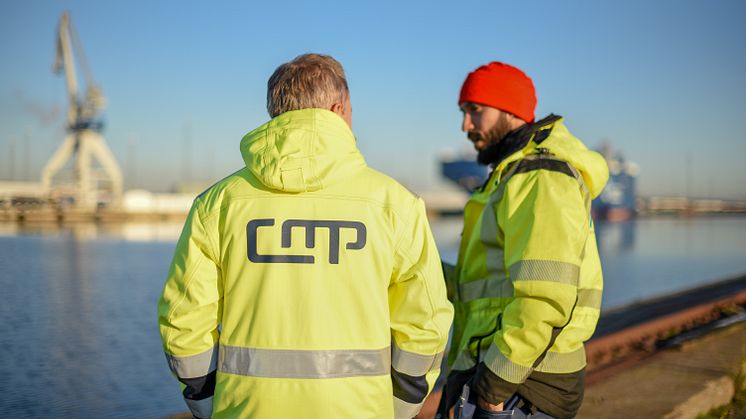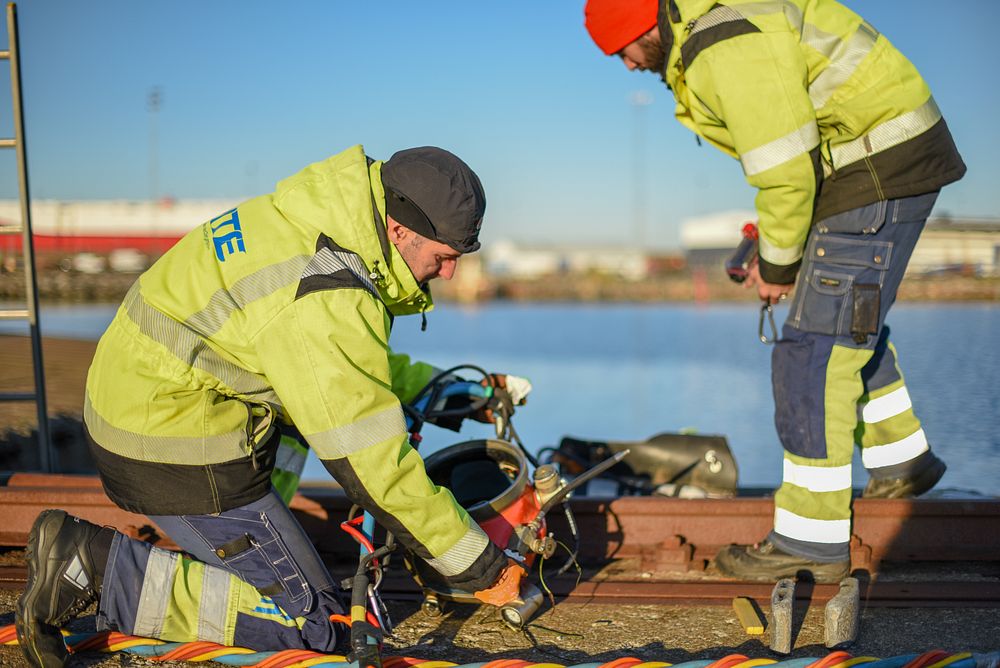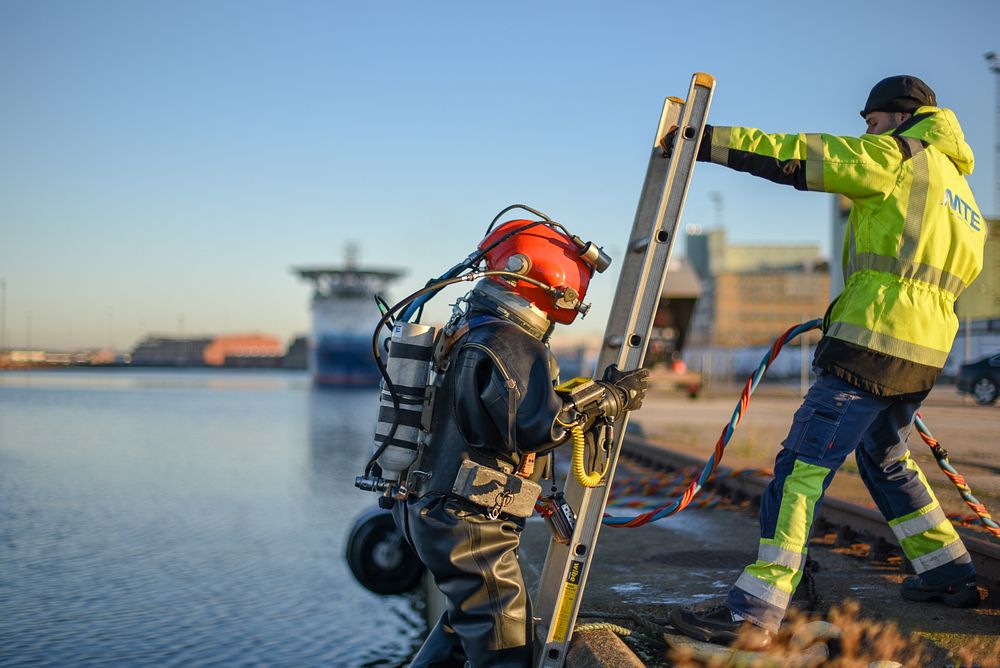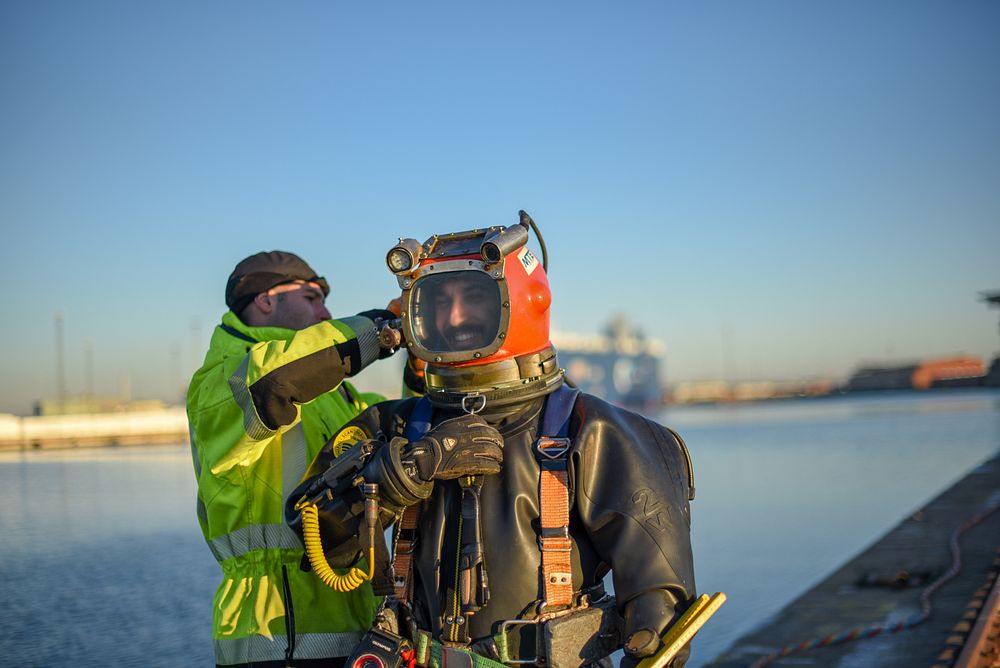
News -
A deep dive in the harbour
As a port, it is of the utmost importance that we have knowledge of the condition of our quays as they are essential for running our operations. In order to ensure the condition of the quays, we conduct regular inspections of the quay stocks using divers. In the past few weeks, a diving team from MTE has dived all around our entire operations in Malmö to inspect the quays. In total they have dived along 3,160 metres of quay to ensure that it is in an acceptable condition.

One of the divers carrying out the work is Christos. He has worked as an industrial diver for three years and describes it as a physically strenuous but thrilling job. The diving helmet alone, which looks like it has been taken directly from a sci-fi film, weighs 12 kilos, and the total weight of the equipment is around 45 kilos.
Today, the divers are at a depth of 9 metres and the diving helmet supplies Christos with oxygen while he is under the surface with a long tube; the tubes glimpsed in the pictures are only there to be used if the primary oxygen source would be compromised. Aside from functioning as a source of oxygen, the helmet is equipped with a torch, a camera and a microphone. This is the communication channel between Christos and his colleagues above the surface.

"By communicating with each other I can ask questions, report on objects observed and get help if I would need it."
Christos also shows how he can use the helmet to control the air supply in the suit, which means that he can move upwards and downwards in the water. He does this with the help of a valve located on the left side that he reaches by wiggling his head a little. He says that the three most important things to think about when you are below the surface is to keep warm, be careful and move slowly along the bottom.

“When you dive for pleasure, you can leave your thoughts above the surface. But as an industrial diver, you need to constantly be attentive and inspect, search and report back on the objects you see in the water.”
The things that Christos and his colleagues report from their dives forms the basis for deciding if and when measures need to be taken to safeguard future operations.
“With the right information, we can make informed decisions, and any action is planned well ahead of time so that disruptions in the daily work in our ports are minimized,” says Christopher Kolbjörnsen, engineer at CMP in Malmö.
